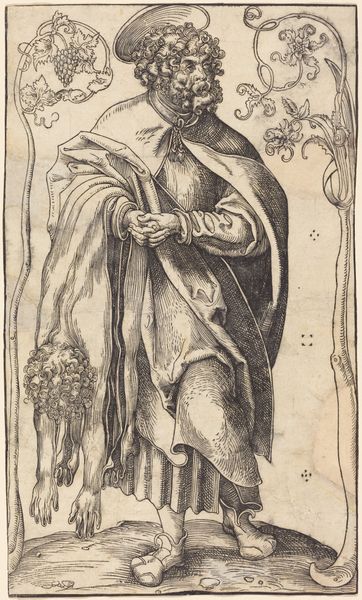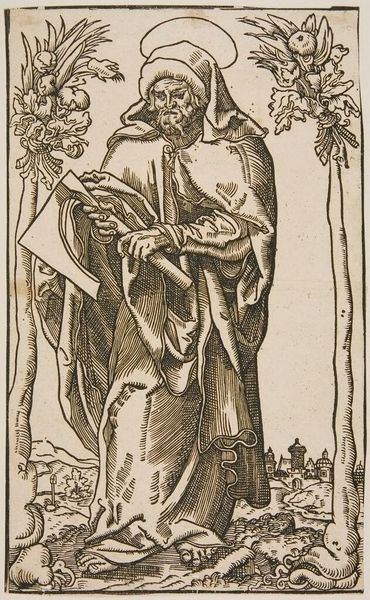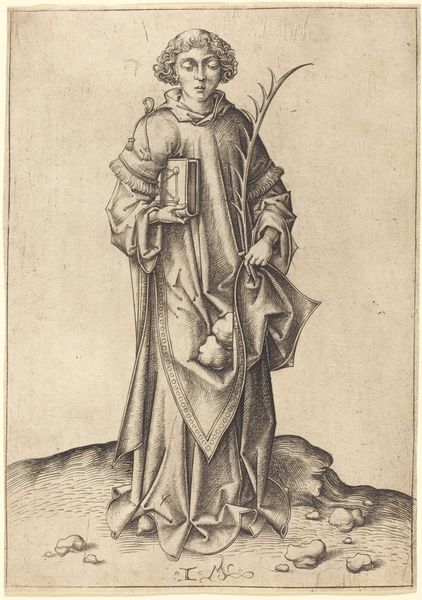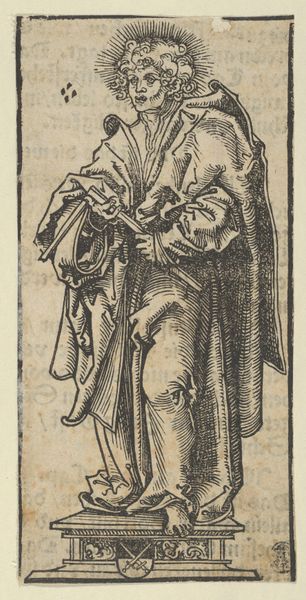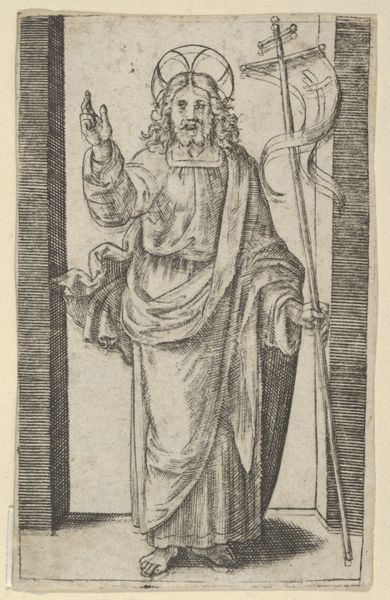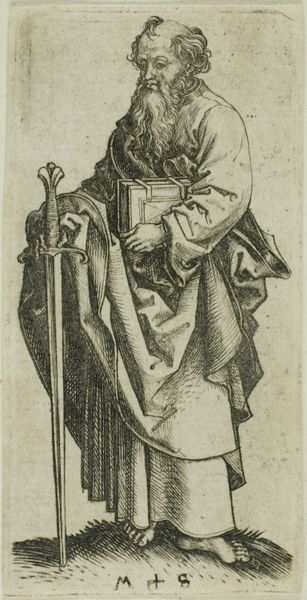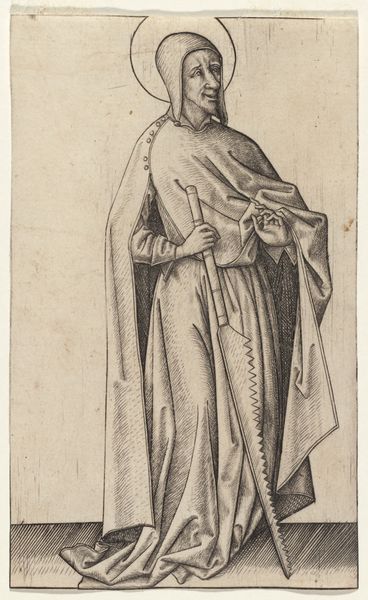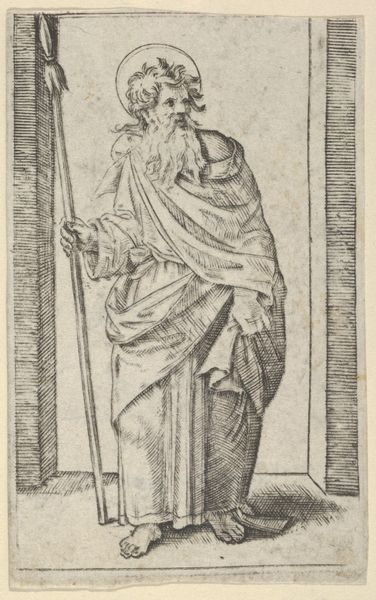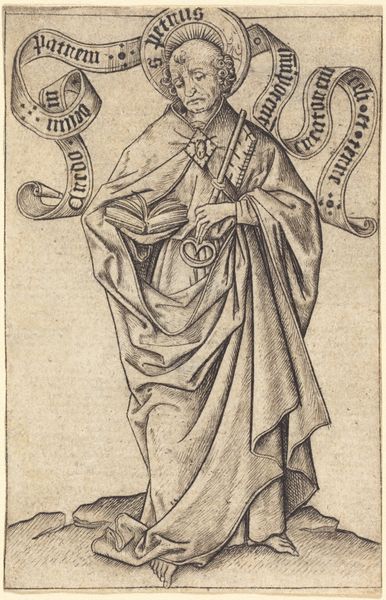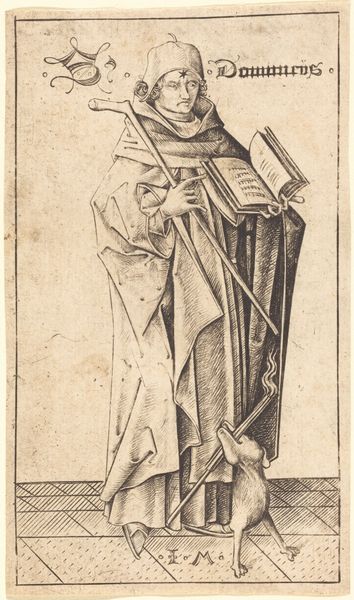
Saint Matthias, from Christ, the Apostles and Saint Paul 1510 - 1515
0:00
0:00
drawing, print, paper, woodcut
#
portrait
#
drawing
#
germany
# print
#
figuration
#
paper
#
woodcut
#
line
#
history-painting
#
northern-renaissance
Dimensions: 216 × 188 mm (image/block/sheet)
Copyright: Public Domain
Curator: This print is Lucas Cranach the Elder’s "Saint Matthias, from Christ, the Apostles and Saint Paul", created around 1510 to 1515. It’s a woodcut on paper, currently held at the Art Institute of Chicago. Editor: My first impression is somber. There's a stark intensity in Matthias’ face. He appears burdened, thoughtful, maybe even a little wary. It’s compelling. Curator: Cranach, working in Wittenberg during the Reformation, presents Saint Matthias holding an axe. That instrument is the traditional symbol of his martyrdom. The very sharp lines of the woodcut emphasizes the grim story surrounding this figure. Editor: It's interesting to see how Cranach merges religious iconography with, dare I say, a very human portrayal of Matthias. He looks like a common person, not particularly idealized. What was Cranach saying about faith and martyrdom in early 16th century Germany? Curator: This print, part of a series, circulated widely. Consider the historical context. The printing press allowed the mass distribution of images and ideas. Cranach was the court painter to the Elector of Saxony, a supporter of Martin Luther. Thus, his imagery and messaging reach many people in support of new theologies and social changes. Editor: Right, that explains the accessible depiction. This would make this Matthias very relatable and not just some unreachable divine figure. I'm thinking about how effective this type of representation might have been in galvanizing support or provoking reflection among the masses. Curator: The composition has an impact too, of course. Matthias stands centrally with the tool that sealed his fate and looking sternly at a direction we are unable to follow. Framed on either side by ornamentation. This has a monumental effect considering it is such a small image. Editor: I agree. Seeing the work within that context sheds new light. What struck me initially as mere stoicism now appears charged with layers of meaning, connecting this apostle directly to both spiritual struggle and to very tangible socio-political issues. Curator: The use of line, typical of woodcut prints, defines the detail in his robes, his beard, and the subtle shadows across his face, which further underscores Matthias’ solemn nature and perhaps alludes to the weighty decisions demanded of his position. Editor: Ultimately, considering the confluence of artistry, historical conditions, and cultural climate makes this small print a powerful representation of faith, identity, and political undertones. Curator: Exactly. And that complex interaction, makes Cranach’s Saint Matthias a poignant piece of Reformation history.
Comments
No comments
Be the first to comment and join the conversation on the ultimate creative platform.

